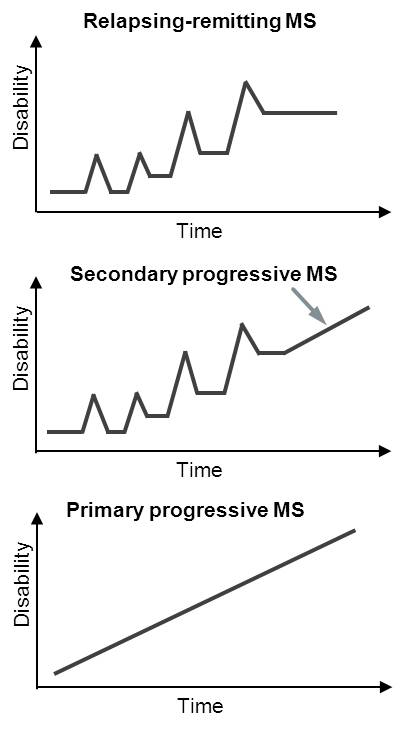Clinical Research Priority Program - Precision MS
Multiple Sclerosis - a heterogenous autoimmune disease

Multiple sclerosis (MS) is a prototypic autoimmune disease, which leads to central nervous system (CNS) damage of young adults between 20-40 years of age and women about three times more often than men. Approximately 15.000 people in Switzerland are affected with MS, and worldwide about 2.5 million. Its etiology involves a complex genetic trait with more than 200 risk-conferring gene variants, most importantly the HLA-DR15 haplotype, but also several environmental risk factors including Epstein Barr virus (EBV) infection, low vitamin D3 levels, smoking and obesity (Levin et al, 2005; De Jager et al., 2008; Olsson et al, 2017). The interplay of these risk factors can lead to the development of MS, however, the exact sequence of events that starts it is not known yet. Disease mechanisms of MS involve the adaptive immune system, particularly autoreactive T- and B cells, and innate immune cells, which together lead to brain tissue damage. After activation in the peripheral immune system, autoreactive T- and B cells enter the brain and cause de- and remyelination, axonal and neuronal damage, astroglial activation, oxidative stress and metabolic changes as the most prominent processes. Each of these can vary in expression with the result of enormous variability regarding imaging findings, clinical course and treatment response in the individual patient. The development of treatments for MS has been very successful in the last 20 years, and 14 approved immunomodulatory drugs are now available. However, important unmet medical needs remain (e.g., curative approaches, neuro- and myelin-protective therapies and many more). Besides the continuing search for more effective, well tolerated treatments and those targeting disease mechanisms other than autoimmune inflammation, we need to learn better how to apply the existing therapies to the individual patient, consider her/his specific risk profile, the form and stage of the disease and ideally even the cellular and molecular mechanisms.
CRPP Precision MS - Our mission
MS can be seen as a prototypic example to pursue research in personalized medicine and the underlying mechanisms of disease heterogeneity. Further, it is ideal to translate already existing knowledge and novel findings into clinical routine. Towards this goal, the clinical research priority project, Precision-MS (CRPP PrecisionMS), will address two main aims, 1) to develop clinical, -imaging, and biological markers and models that allow characterization of the most important disease mechanisms and whether mild or severe disease can be expected in an individual patient. This part will include the study of genetic and environmental risk factors in in vitro models and in biosamples (serum, cerebrospinal fluid (CSF) and peripheral blood- and CSF cells of patients and controls), and the examination of magnetic resonance imaging (MRI) patterns. Further, clinical findings (e.g., frequency of disease relapses and disability evolution) will be captured. Already existing measures (clinical examination, MRI, biomarkers), but also newly developed sensor- and app-based technologies will be applied. The integration of complex datasets from these different fields, development of models for individual risk and the validation of important parameters will be pursued. Under aim 2, individualized patient management shall already be started using known predictors of outcome, e.g. certain clinical- and imaging parameters as well as biomarkers (neurofilament, CSF parameters), patients shall be followed by standardized algorithms, and treatment choice and escalation be based on clearly defined measures. New observations that are identified under aim 1 shall continuously be incorporated into routine care, but particularly also be applied in investigator-initiated, proof-of-concept trials of new therapies for MS. The development of innovative trial designs and their application in investigator-initiated proof-of-concept clinical trials will be an important component of aim 2.
PrecisionMS brings together a group of investigators with extensive experience in their respective fields. Their knowledge is highly complementary and promises to pursue the goals of PrecisionMS successfully and with high potential for innovation.
CRPP - from the old to the new one
PrecisionMS builds on efforts within the previous CRPPMS that focused on disease heterogeneity of MS. PrecisionMS is tightly linked to one of the largest MS centers in Switzerland, where clinical follow-up, acquisition of biosamples, imaging and conduct of trials is being pursued at high international standards. A large part of the infrastructure was formed under the CRPPMS and builds now an important foundation for the CRPP PrecisionMS.
Please find information to the old CRPPMS here on the archived webpage: